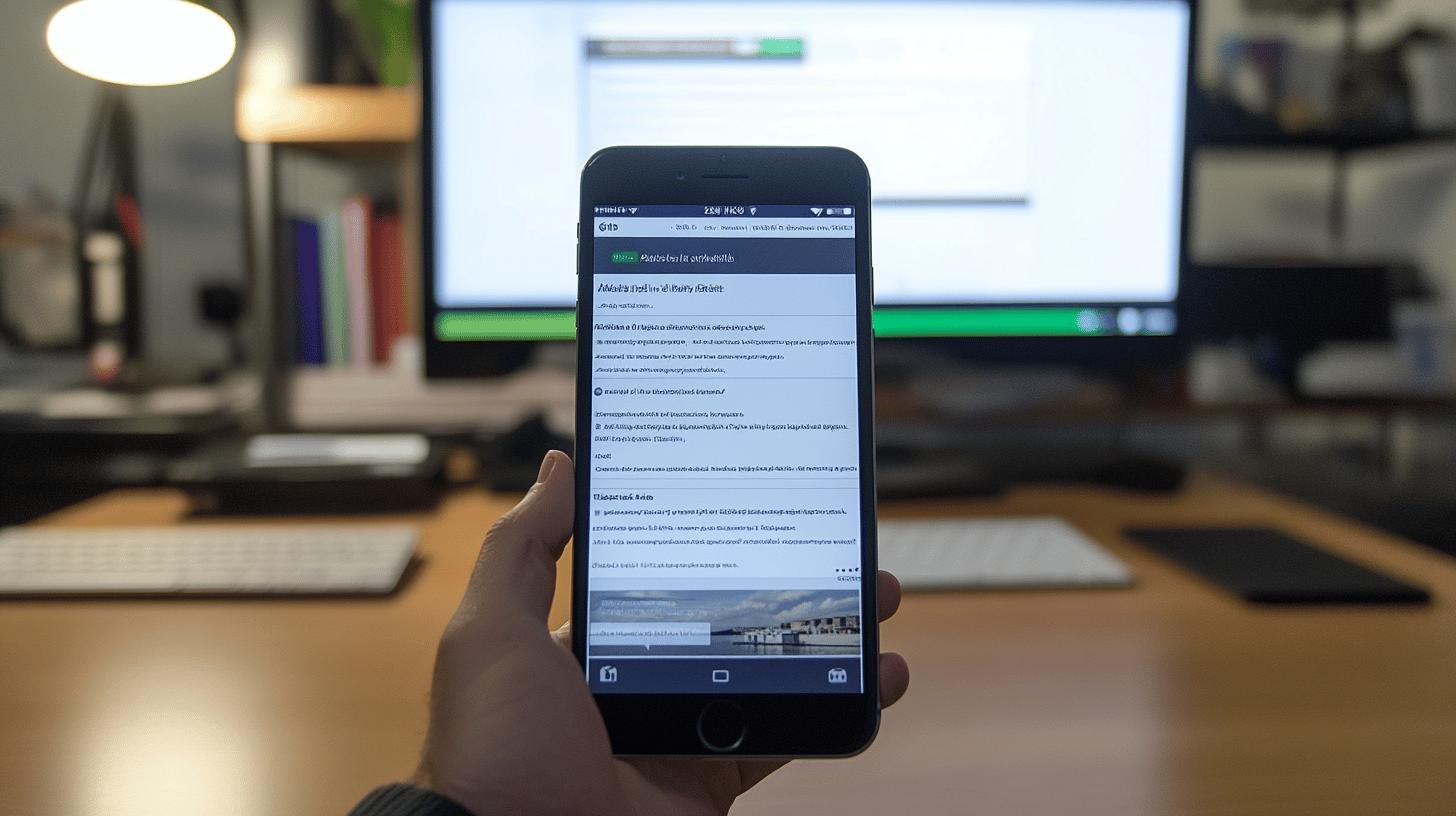Ever tapped your foot waiting for a page to load, only to click away in frustration? You’re not alone! In the speedy world of SEO, every second counts—literally. The magic number for the best page load time is usually around 2 seconds or less. This isn’t just about keeping visitors happy; it’s about climbing those Google ranks too! Ready to boost your site’s speed and get the SEO success you crave? Let’s dive into understanding the perfect load time and why it’s your secret weapon for staying ahead of the SEO curve.
Understanding the Best Page Load Time for SEO
For SEO, aim for a page load time of 2 seconds or less. That’s the target! Why? Because faster pages please both search engines and users. Imagine a page loading in 500 milliseconds, like a sprinter finishing a race before others even start—quite impressive! While 2 seconds is a robust benchmark, some content may require even quicker speeds.
Here’s why meeting these benchmarks is crucial:
- Better Rankings: Google favors fast-loading sites. Faster pages can improve your position in search results.
- Reduced Bounce Rates: Slow pages often drive visitors away. Maintain lower load times to keep users engaged.
- Improved User Experience: Quick-loading pages result in happy users, increasing engagement and session duration.
Failing to meet these benchmarks can be more than just a minor issue. Slow load times often spike bounce rates—people might leave before the page fully loads. This not only frustrates visitors but also sends negative signals to search engines, harming rankings. Keeping your site speedy benefits both SEO and user satisfaction.
How Page Load Time Affects SEO Rankings

Google prioritizes fast websites because page speed is a critical ranking factor. Faster-loading sites have a better chance to rank higher. Google’s algorithms favor such sites for offering a smoother user experience. To ascend in search results, ensure snappy load times.
But how does page speed affect user experience and session duration? Imagine waiting endlessly for a site to load. Most would opt to leave rather than stay. Slow pages frustrate users, leading to shorter visits and higher bounce rates. In contrast, fast pages keep users engaged, resulting in longer sessions and more interactions. This enhanced experience encourages further exploration, boosting overall site performance.
Faster load times lead to higher search rankings, while slow load times result in increased bounce rates. Improved load times enhance user sessions, leading to longer session durations, and an overall better user experience fosters greater site engagement.
Improving page speed isn’t solely for user satisfaction—it’s vital for SEO. With extended sessions and more engaged users, SEO metrics improve overall. A fast page delights both users and search engines!
Tools and Methods for Testing Page Load Time
Wondering why you should test your website’s speed? These tools are like your site’s personal trainers. They diagnose slowdowns and offer tips to boost speed. Much like using a stopwatch, these tools measure your site’s speed and suggest improvements.
Here’s a rundown of three popular tools for testing page load time:
- Google PageSpeed Insights: A favorite for many. It provides a speed score and specific improvements. You get insights for both mobile and desktop speeds—super helpful.
- Semrush Site Audit: Offers a comprehensive website performance analysis. It pinpoints speed-affecting issues and gives actionable fixes. It also covers a wide range of SEO factors for optimal site health.
- GTmetrix: Known for detailed reports, GTmetrix offers speed scores and a waterfall breakdown. It shows which elements slow the site down, like an X-ray for your website!
After obtaining results, interpretation is key. For instance, if Google PageSpeed Insights flags slow-loading images, compress them or use more efficient formats. By following recommendations, you can effectively speed up your site, enhancing both the user experience and SEO. Get these tools in action and see your website zoom!
Practical Tips for Optimizing Page Load Time

Let’s make your website as fast as a cheetah. Optimizing page load time isn’t only for search engines; it also boosts user satisfaction. Faster sites enhance SEO rankings and provide a smoother user experience. Nobody enjoys waiting for pages to load, so a few adjustments can ensure a great first impression every time.
Here are five strategies to speed up your site:
- Image Compression: Large images slow sites down. Compress them to reduce size without losing quality, leading to faster load times and happier visitors.
- Content Delivery Network (CDN): A CDN stores site content at multiple locations worldwide. Users access the nearest server, reducing loading time.
- Caching: stores parts of your site in a browser, speeding up subsequent visits by reducing download needs.
- Minifying Code: Tidying your code by removing unnecessary spaces in HTML, CSS, and JavaScript makes files smaller, speeding up loading.
- Reduce Redirects: Each redirect adds wait time. Reducing redirects accelerates site loading, improving user satisfaction.
Optimizing these areas significantly boosts page speed and gives an SEO advantage. Faster load times positively influence search engines, potentially improving rankings. A quick site encourages users to explore, benefiting both SEO and user experience. So, give your site a speed boost—it’ll pay off in many ways.
Common Challenges and Solutions in Achieving Optimal Load Time
Why is my website slow? This is a common concern for many with sluggish load times. Common issues include code overhead, large assets like images and videos, and slow server response times. These factors hinder site performance, frustrating visitors and increasing bounce rates.
Here are four ways to address these problems:
- Optimize Code: Simplify JavaScript, CSS, and HTML by removing unnecessary elements for leaner, faster performance.
- Compress Images: Reduce image sizes without sacrificing quality to lighten the site load and enhance speed.
- Leverage Browser Caching: Save some site data in browsers, minimizing download needs on repeat visits.
- Improve Server Response Times: Opt for a reliable host and consider a CDN to shorten data travel distances.
Addressing these challenges can enhance your site’s performance, improving loading times and overall functionality. This leads to a better user experience and a positive impact on your SEO efforts. Start optimizing these areas to watch your site soar to success!
The Role of Mobile Page Speed in SEO

Have you heard of mobile-first indexing? It’s crucial in the SEO realm. Mobile-first indexing means search engines assess your mobile site version first when determining your search rank. If your mobile site is sluggish, it could negatively affect rankings. Faster mobile speeds impress search engines, signaling readiness for the dynamic mobile landscape.
Mobile speed also greatly influences user satisfaction. Imagine trying to read an article or view a product on your phone, but the page takes forever to load. Frustrating, isn’t it? Slow mobile speeds cause higher bounce rates, where visitors leave the site. Fast-loading mobile pages keep users engaged, increasing chances of interaction or purchase. Businesses should prioritize optimizing mobile load times for happy, engaged visitors. A satisfied user boosts engagement and ultimately enhances SEO performance.
Conclusion
Achieving the best page load time for SEO is crucial to staying ahead in the digital game. In this guide, we explored how fast load times can boost your rankings, improve user experience, and decrease bounce rates. We also covered tools like Google PageSpeed Insights for testing your website speed.
Finally, we shared practical tips to make your site faster and overcome common issues that slow you down. By focusing on both desktop and mobile performance, you can create a faster, more engaging web experience.
FAQ
What is a good page load time for SEO?
A good page load time for SEO is 2 seconds or less. Faster load times improve user satisfaction and can boost search rankings.
Does page load speed affect SEO?
Page load speed directly impacts SEO. Faster sites rank better and keep users engaged longer, reducing bounce rates.
How can I increase website speed on WordPress?
To increase WordPress speed, compress images, use caching plugins, minify code, and consider a Content Delivery Network (CDN).
What is the optimum website loading time?
The ideal website loading time is 500 milliseconds, which provides an excellent user experience and enhances SEO.
Why is page speed important for SEO?
Page speed is vital for SEO because it improves the user experience, decreases bounce rates, and helps achieve higher search engine rankings.




